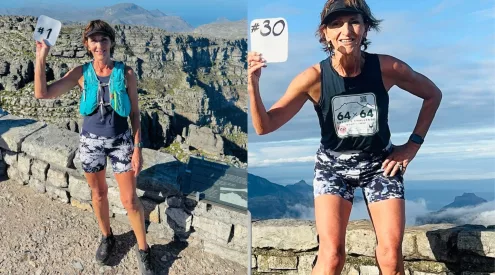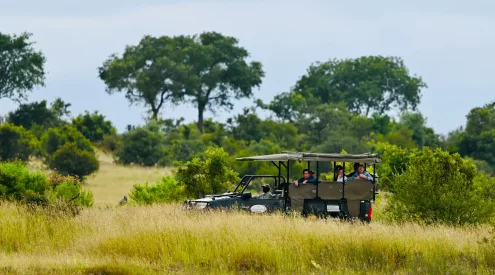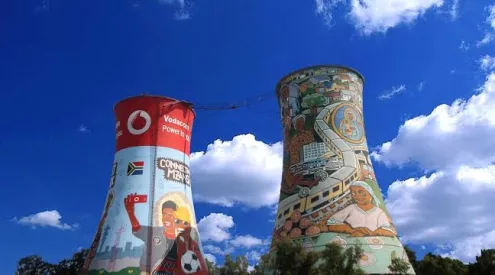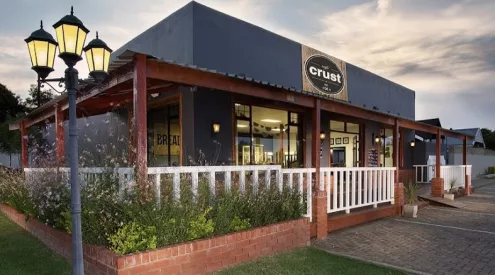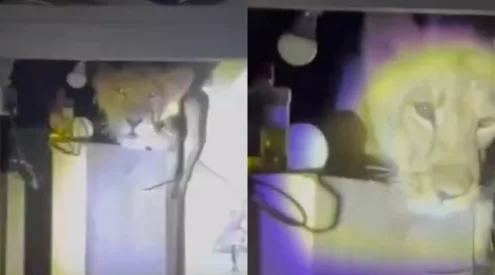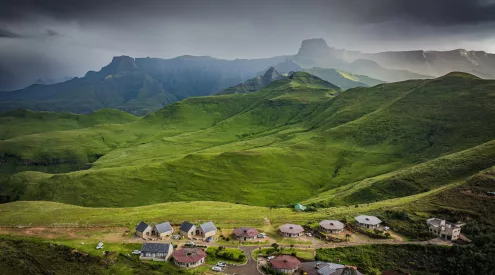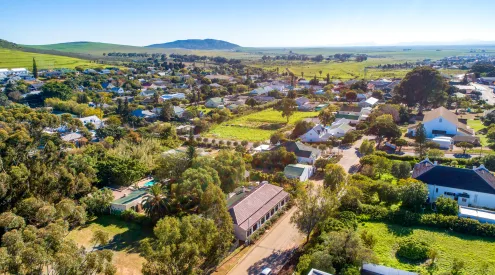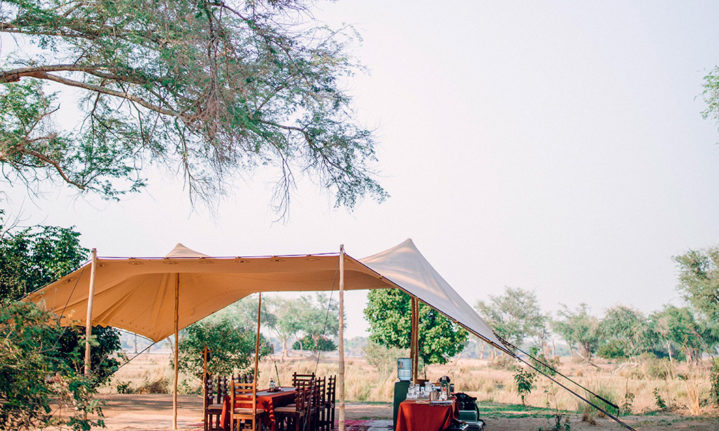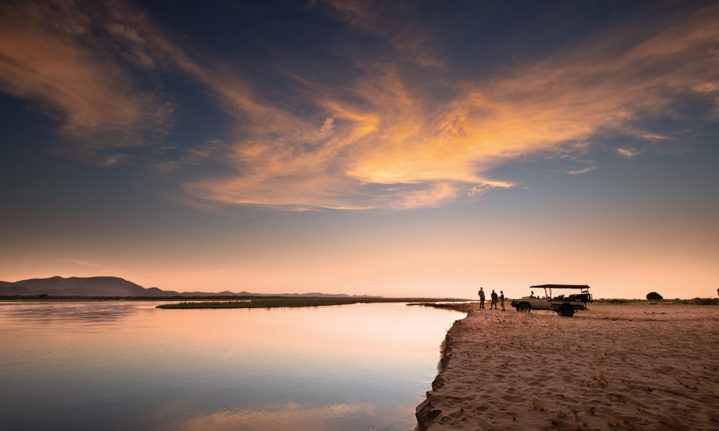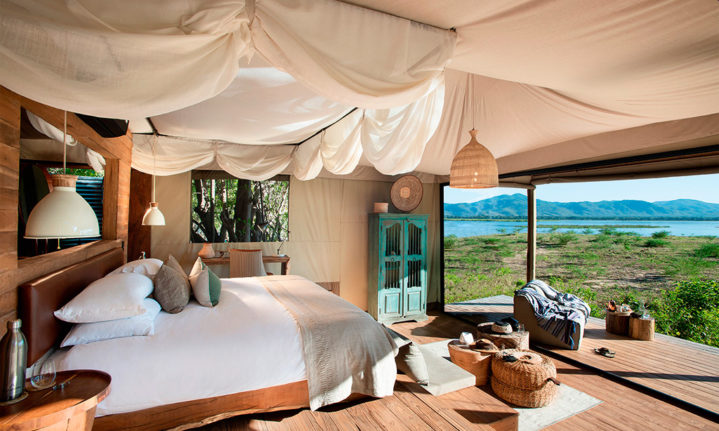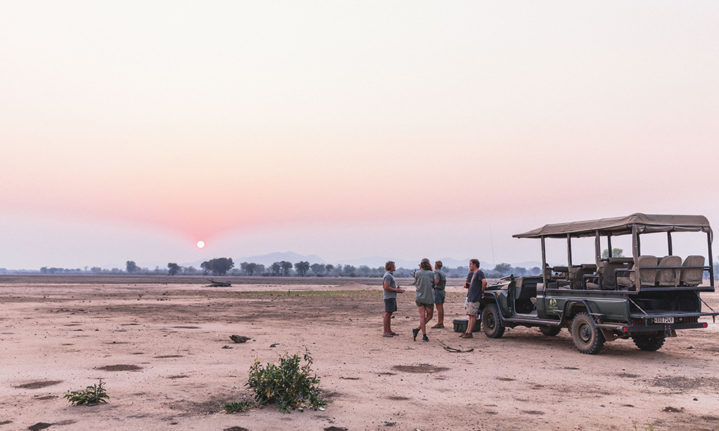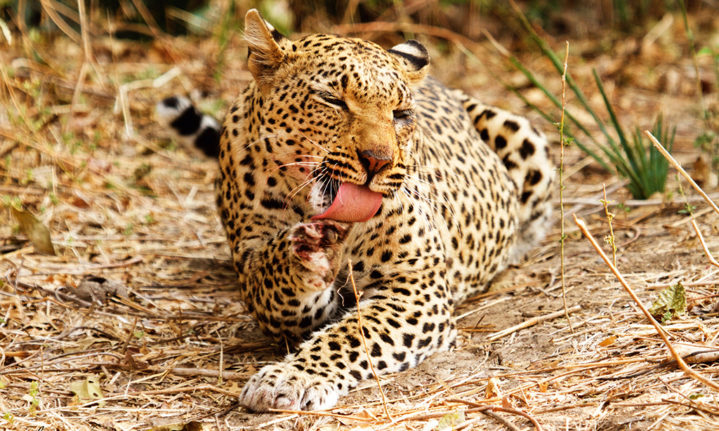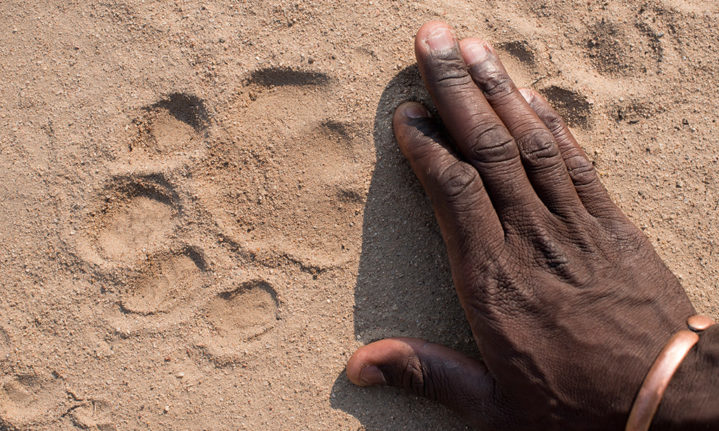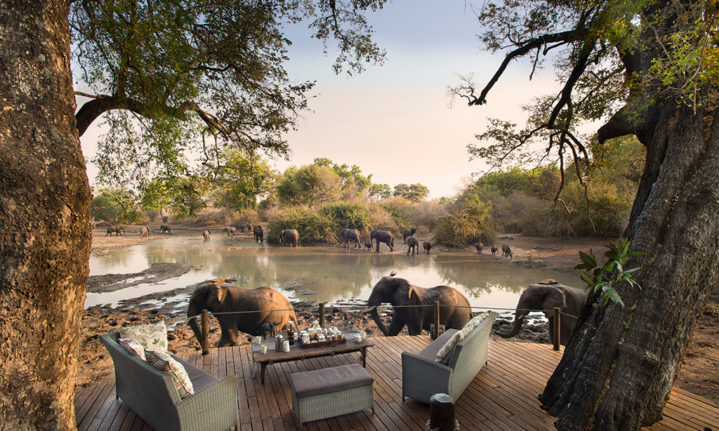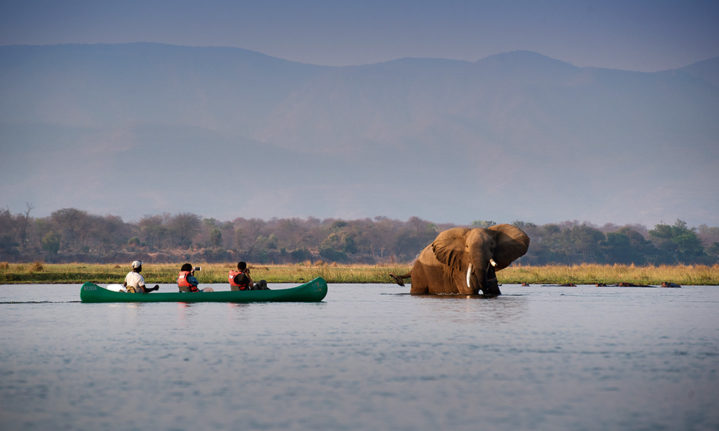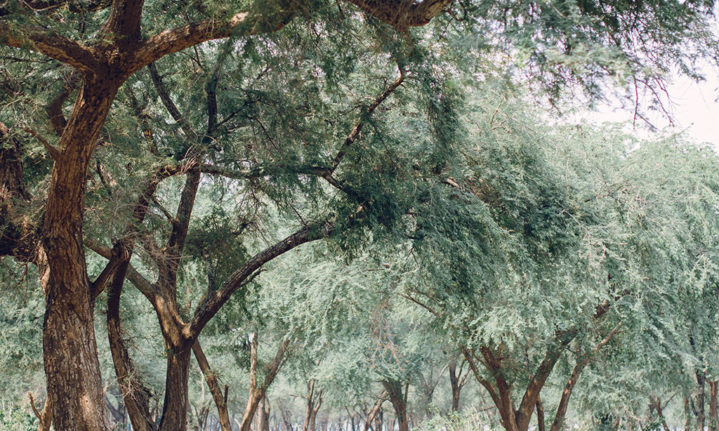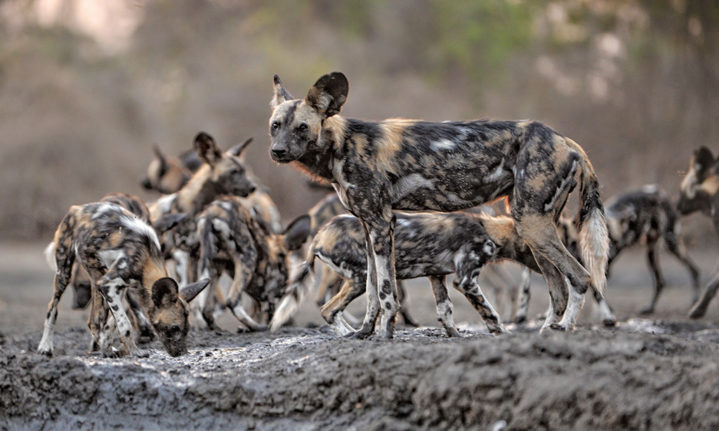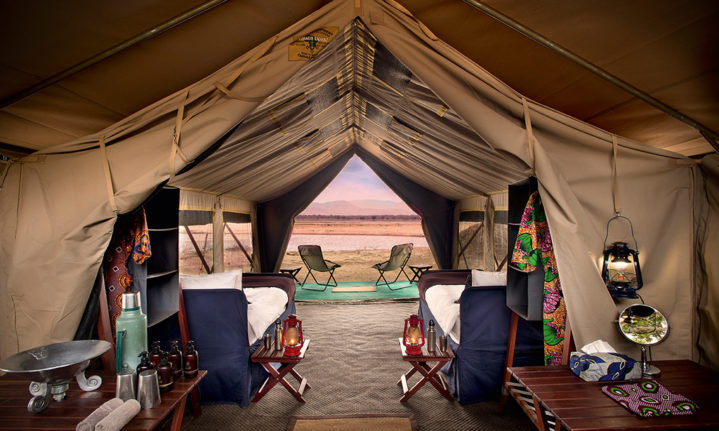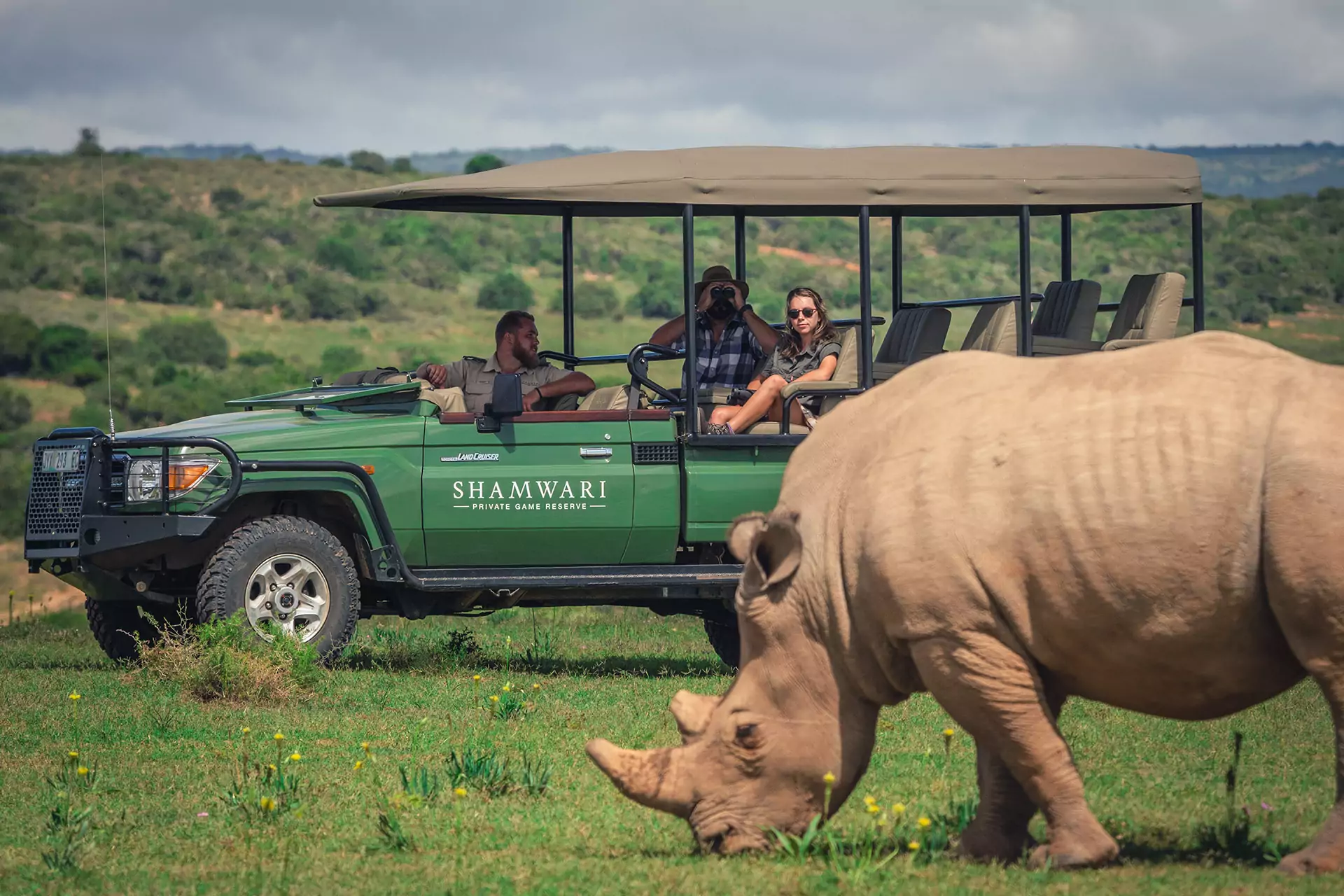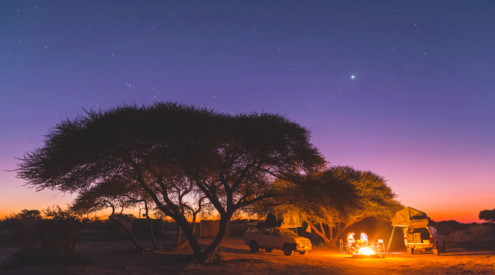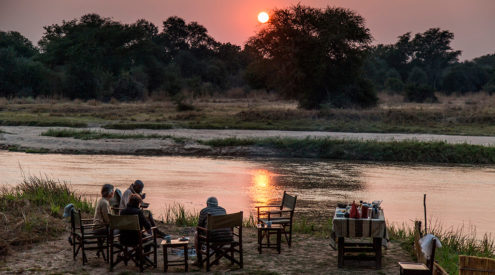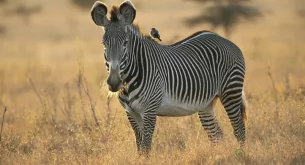Two celebrated national parks, Mana Pools and Lower Zambezi, face each other across this mighty river. We find out what’s new … and what makes these parks so extraordinary.
Words by Sarah Kingdom
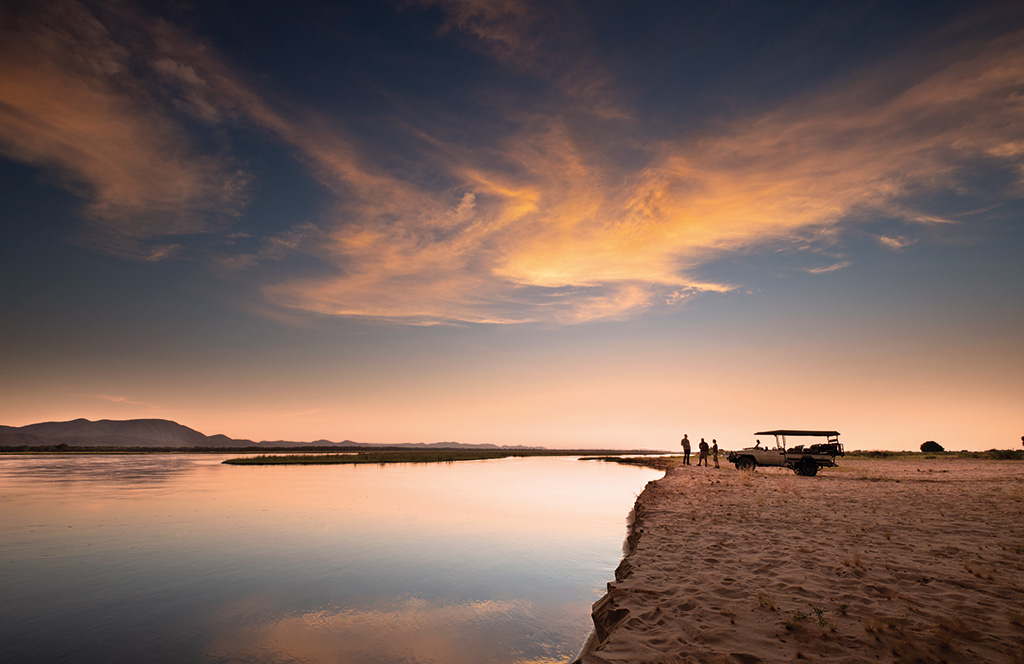
The Zambezi River is the fourth largest in Africa, sustaining remarkable wildlife along its broad valley. Image: African Bush Camps.
Baboons leapt through the stream where a zebra carcass lay. Two lionesses and their cubs relaxed in the cool sand nearby, bellies bloated. Behind us the distinctive chirruping of wild dogs could be heard as they made a beeline for the carcass. Upon arrival they spotted the lions, including a large male who’d just appeared. Having second thoughts, the dogs turned tail and trotted off. Minutes later we heard them yelping, and elephants trumpeting in agitation. The male lion bolted in the direction of the noise with us hot on his heels.
In a clearing stood five elephants; a pair of females with three babies. The matriarch was charging repeatedly at six wild dogs that whooped and howled, scuttling out of her way. Initially it appeared the dogs were attacking the young elephants, then we saw a dead impala lying in the dust. The panicked elephant matriarch charged towards the carcass, trampling and kicking it like a football, before levering her tusks beneath it and tossing it into the air. The commotion continued and while the elephants were distracted by the dogs, the male lion saw his chance. Running in, he seized the bedraggled impala and made off with it. The dogs attempted to steal it, but only succeeded in biting off a few strips of its skin and shattered bones.
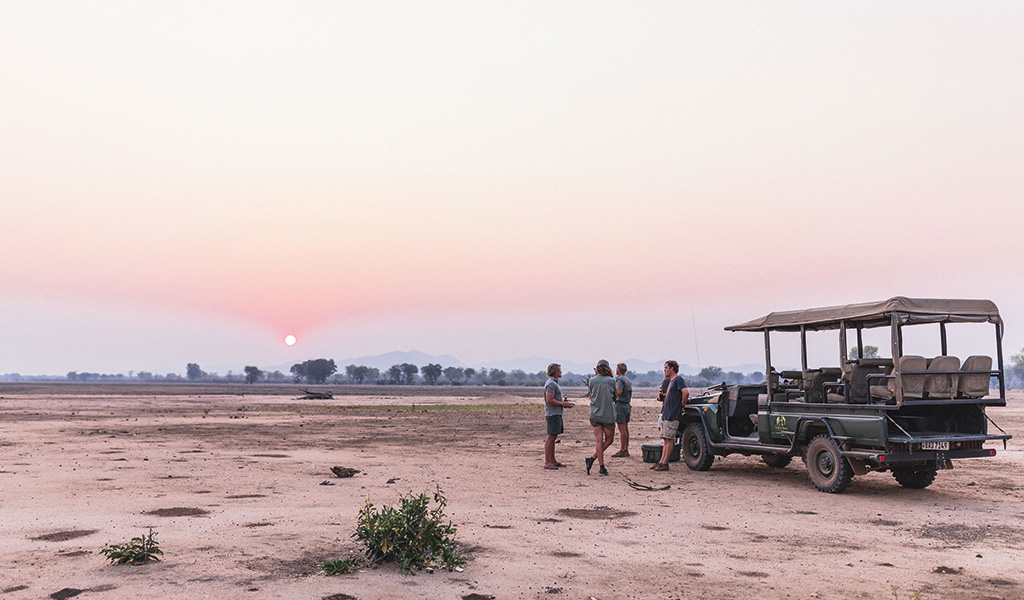
Summer temperatures reach well into the 40s with welcome relief at the end of the day. Image: Tusk and Mane.
The dogs gave up, the elephants settled down and the lion slunk away. In the calm, a leopard appeared from the undergrowth. Probably the original ‘owner’ of the impala, she forlornly sniffed the ground searching for traces of her dinner.
My husband and I were with Tusk & Mane Safaris in Zambia’s Lower Zambezi National Park on the northern bank of the river. Over the water we looked on Mana Pools National Park, a vast conservation area in Zimbabwe comprising 2,196 square kilometres of wilderness.
The beauty of these two parks lies in their wildness and the opportunity to get up close to game, like elephants that find shade beneath towering acacia trees and wild dogs that traverse the flood plains on the hunt for prey. Lions and leopards are common on both sides, and the river in-between is home to countless hippos, crocodiles and tigerfish. Animals roam freely across the river, and between the unfenced Safari and Game Management Areas (GMAs) on their peripheries. The escarpments along the fringes of the parks are the only real barriers, and the majority of wildlife is concentrated on the plains beside the river, the lifeblood of the region.
Most visitors to Lower Zambezi arrive by boat or light aircraft, though if you have some off-road driving experience, and come at the right time of year, a road trip is certainly possible.
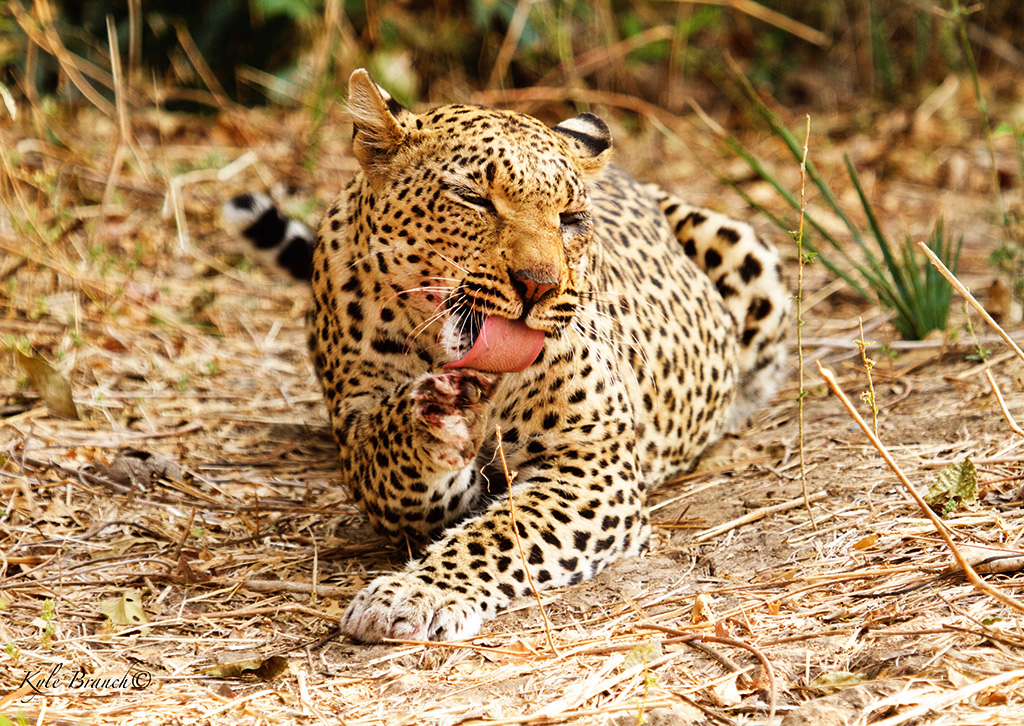
Leopards are at home here due to the many large trees in which to hide. Image: Tusk & Mane.
We had started our journey at Kayila Camp, a new lodge surrounded by several ancient baobab trees, in a private reserve in the Chiawa GMA. From the dining room, perched above the water, we were eye level with the lavender-coloured blossoms of giant rain trees. Warthogs glistened, fresh from mud baths. Impala on the river bank were silhouetted against the setting sun.
On an afternoon fishing trip we watched elephants come down to the river for a swim and sand-bath. While on the boat we received a radio message from camp. Baboon alarm calls had alerted staff to a male lion sauntering through the camp and they suggested we might like to return and see it. From the safety of our vehicle, we found him lying beside the laundry in the staff quarters, panting in the late afternoon heat.
Using the river as our ‘highway’, we reached our next destination 50 kilometres downstream from Kayila. Tusk & Mane offers old-style safaris for purists who are not looking for Wi-Fi and spa baths, but still want crisp, clean sheets and ice-cold drinks beside the campfire.
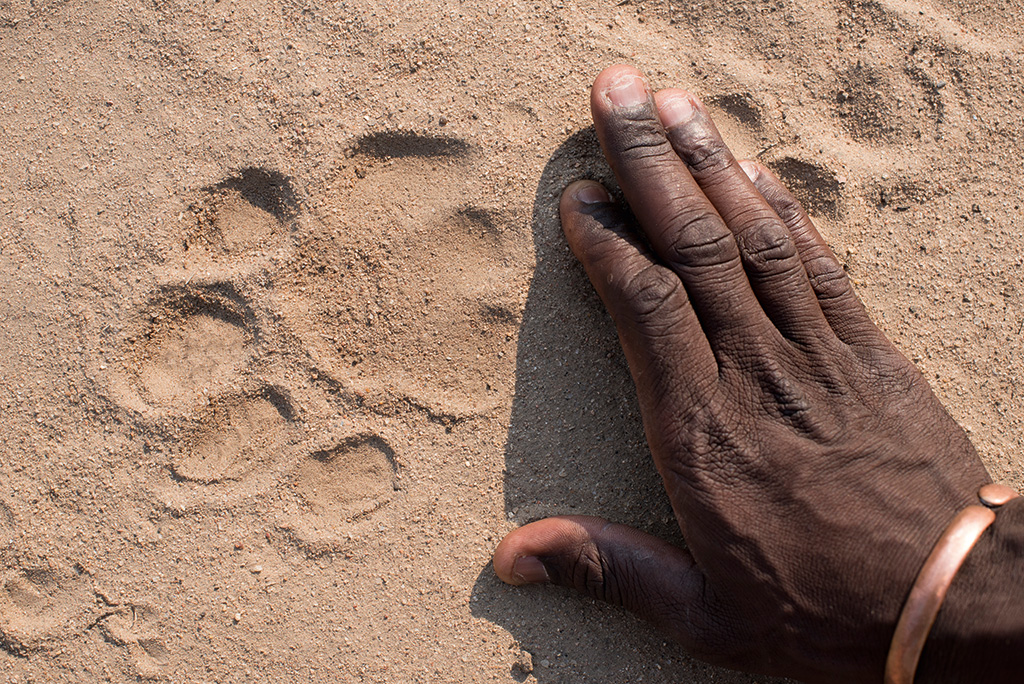
guides on both sides of the river enhance every bush experience, whether you see game or not. Image: African Bush Camps.
We woke at dawn to a chorus of birdsong. The Zambezi Valley is hot in November with daytime temperatures well into the 40s. We had slept with our tent’s sides rolled up to enjoy the cooler night breeze, and metres from our bed we watched an elephant and her calf feeding nearby. We could hear tummies rumbling … and not just our own! The pair moved away and we snuck off to the mess tent for coffee. Minutes later the elephants walked past us nonchalantly as we hastily vacated our seats. They ambled down the slope to the green grass below and we returned to our seats, making sure to keep a careful eye on their movements.
Our final dinner at Tusk & Mane was a memorable one. After an afternoon canoe safari, we reached camp as the heat of the day began to subside, and were ushered to our tent where chilled Champagne waited. It felt surreal to be sitting in our scruffy, khaki bush shorts, a glass of bubbly in hand, watching elephants browsing on the floodplain as the sun set. Later, we dined beneath the stars at a table just for the two of us.
Moving on by boat, we headed another 30 minutes downstream and reached Anabezi in the remote eastern end of the park. Built along the riverbank on a series of raised timber decks and walkways, with various animals foraging below, this was to be a luxurious finale to our Lower Zambezi adventure.
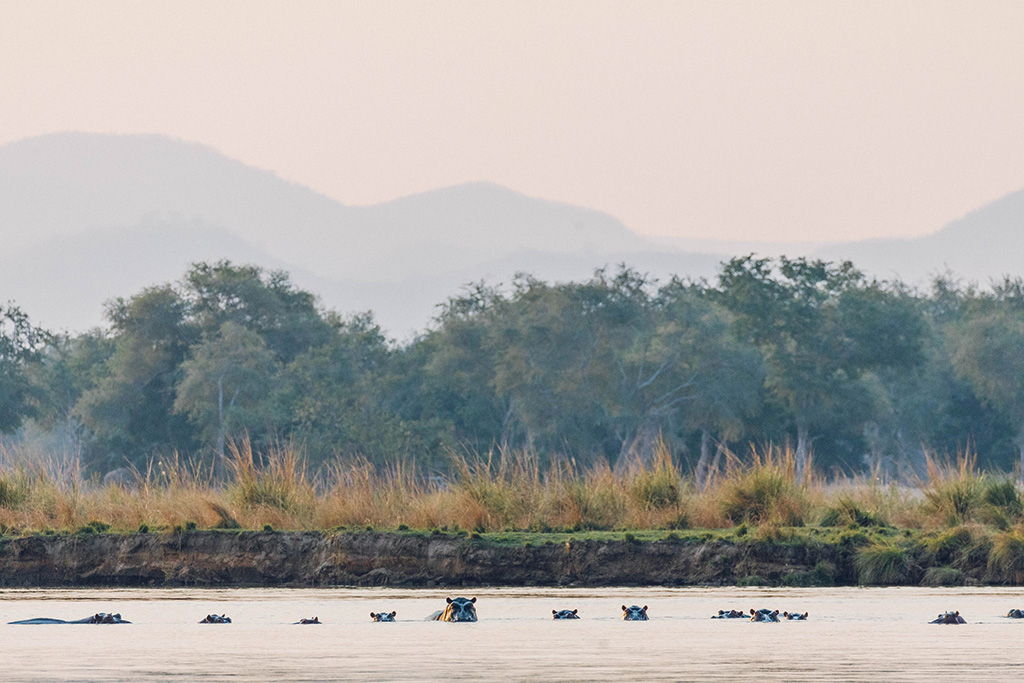
Hippos are your constant companions on the Zambezi River. Image: Tusk & Mane.
Late on our last afternoon, we stopped to look at a tree where a leopard had stashed the remains of an impala. As it got dark, we heard the crunching of bones. Thinking the leopard had returned to finish off her kill, we trained our spotlight and binoculars on the tree. To our surprise we saw an adolescent male lion had managed to scale the tree and was devouring the leopard’s stash. Another lion roared. The youngster, mouth full, gave a muffled response, and the roars continued until they reached the base of the tree. The young male, dropping the bone he’d been munching, skidded awkwardly down the tree, landing with a thud. Offering the bone to his mother, the two rubbed faces affectionately, before vanishing into the darkness.
Our goal on the Zambian side had been to travel the length of the park by water. Some months later we went exploring by land in Mana Pools on the Zimbabwean side of the valley.
Mana is the Shona word for ‘four’, and within the park, the river channels have created four large pools giving the park its name. These pools are surrounded by forests of mahogany, wild fig, ebony and acacia. In the dry season, the shady glades beneath these trees are filled with wildlife, herds of impala, eland, zebra, buffalo, waterbuck and kudu – a pantry for predators and scavengers. There are several large prides of lions, as well as leopards and hyenas. The national park is also a stronghold for wild dogs.
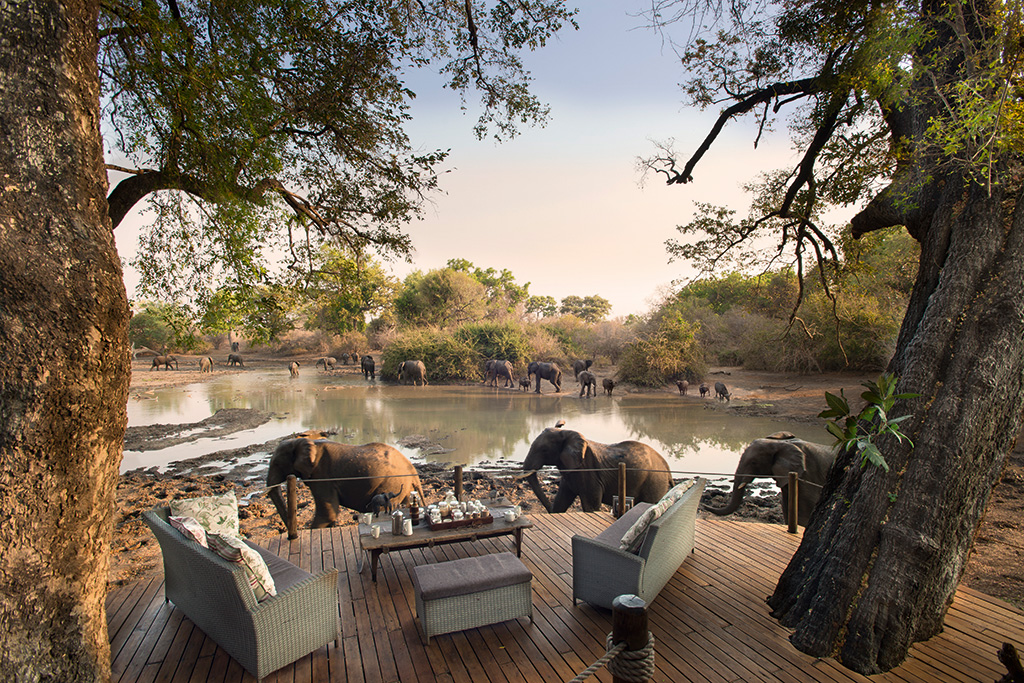
Unlike most camps in Mana Pools, Kanga is situated well inland of the river. Here guests can experience a different aspect of the park as riverine forest gives way to woodland, savanna grassland and wide pans. Image: African Bush Camps.
We started at Kanga Camp, 15 kilometres inland from the Zambezi, away from most of the other lodges. Not long after arriving, we heard the low rumble of elephants. A herd approached the waterhole, splashing into the water – a family group, with a tiny baby in tow. The baby, trying hard to join in on the action, kept disappearing underwater, his tiny trunk protruding like a snorkel just above the waterline. The elephants were our constant companions at Kanga.
Our next stop was Zambezi Expeditions, a tented camp perched on the banks of the river, with the magnificent backdrop of the Zambezi Escarpment across the water. The river here was wide and dotted with islands. Hippos warmed themselves in the morning sun on the river’s edge, sharing sandbanks with silent crocodiles. Elephants and buffalos waded in the shallows and fed on the grassy banks.
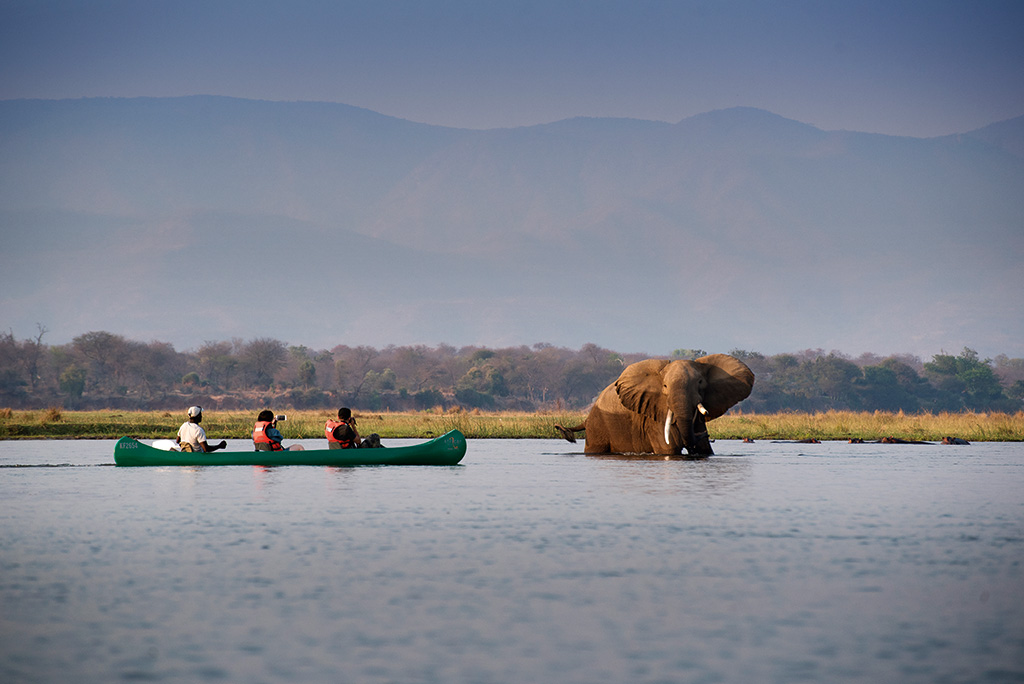
Canoe safaris are an adrenaline rush on a river populated with hippos, crocs and elephants. Image: African Bush Camps.
Heading out from camp in the afternoon for a walking safari with an armed scout, we found a pack of 16 wild dogs napping in a shady depression. Aside from the occasional tail flicking, they lay motionless. As the sun sank lower the dogs began to wake. Yawning and stretching they got to their feet, exchanging elaborate greetings with one another. Becoming livelier, they pranced and played before readying themselves for the evening’s hunt.
The next day, we decided on a change of pace. Canoes, shallow waters, unexpected sandbanks and detours around territorial hippos had the adrenaline kicking in. A herd of waterbuck leapt across a channel in front of our canoes, an elephant loomed over us on the bank, and our day ended with a spectacular sun- downer on a sandbank. Alighting from our canoes, a chilled drink was pressed into our hands and we watched in awe as the vibrant colours of the sunset stained the water.
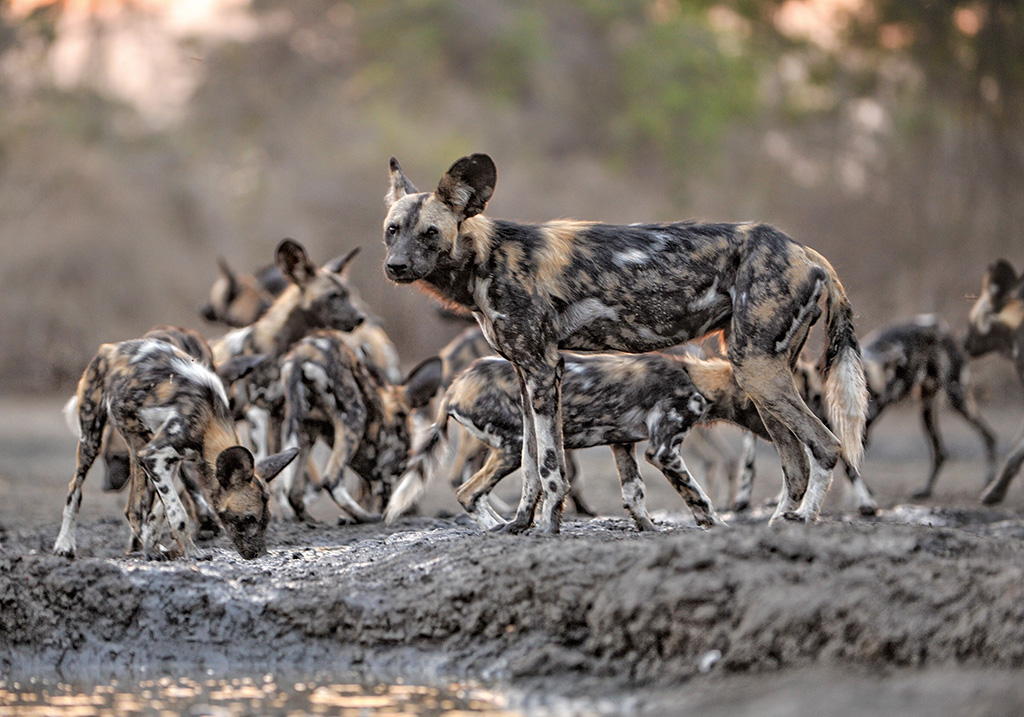
Both parks are home to African wild dogs, one of the continent’s most captivating and endangered species. Image: African Bush Camps.
Our third and final stop was the brand-new Nyamatusi Camp further downstream. Located in an area of Mana Pools where access had previously been restricted, the camp had only been open for a matter of weeks and we almost had this part of the park to ourselves. Wild dogs, lions and a leopard were all spotted close to camp, and in between game drives we watched elephants patrol the opposite bank of the river.
That night, the skies unexpectedly opened and we woke to drizzle and mist on our last morning. The black cotton soil had absorbed the rain and seemed reluctant to let us leave. For us, it meant a slow, slippery drive out of Mana Pools. For the valley, it was a most welcome relief.
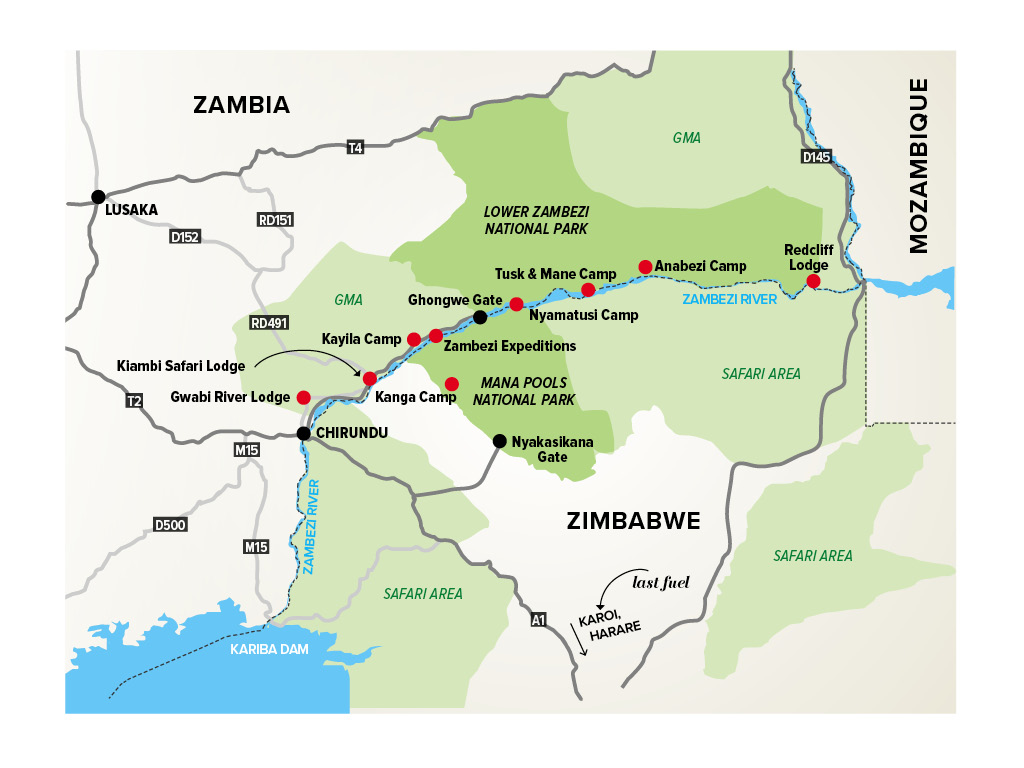
PLAN YOUR TRIP
Lower Zambezi National Park, Zambia
Getting There
From Lusaka it’s a two-hour drive on tar to Chirundu (where there’s a filling station and a Shoprite). From there, it’s 60km on a good dirt road to the entrance of the Chiawa GMA. Park fees aren’t required in the GMA. For those self-driving into the park there’s an office immediately after crossing the Chongwe River.
Need to Know
Discuss anti-malarial medication with your physician before you travel. Tsetse fly give painful bites and are attracted to blue and black, so don’t wear these colours.
If self-driving you need to be self-sufficient and have a 4×4. Alternatively you can leave your car at Gwabi River Lodge where you can arrange to travel to the park by river boat.
Park fees in most cases will be paid through the lodge where you’re staying. If entering the park by boat, your guide will stop to organise your paperwork at the nearest office.
The best time to visit is June to October. Most lodges operate seasonally and are open mid-March to mid-November. Heavy rains mean the park is not traversable from November to March. The best time to catch tigerfish is between September and October.
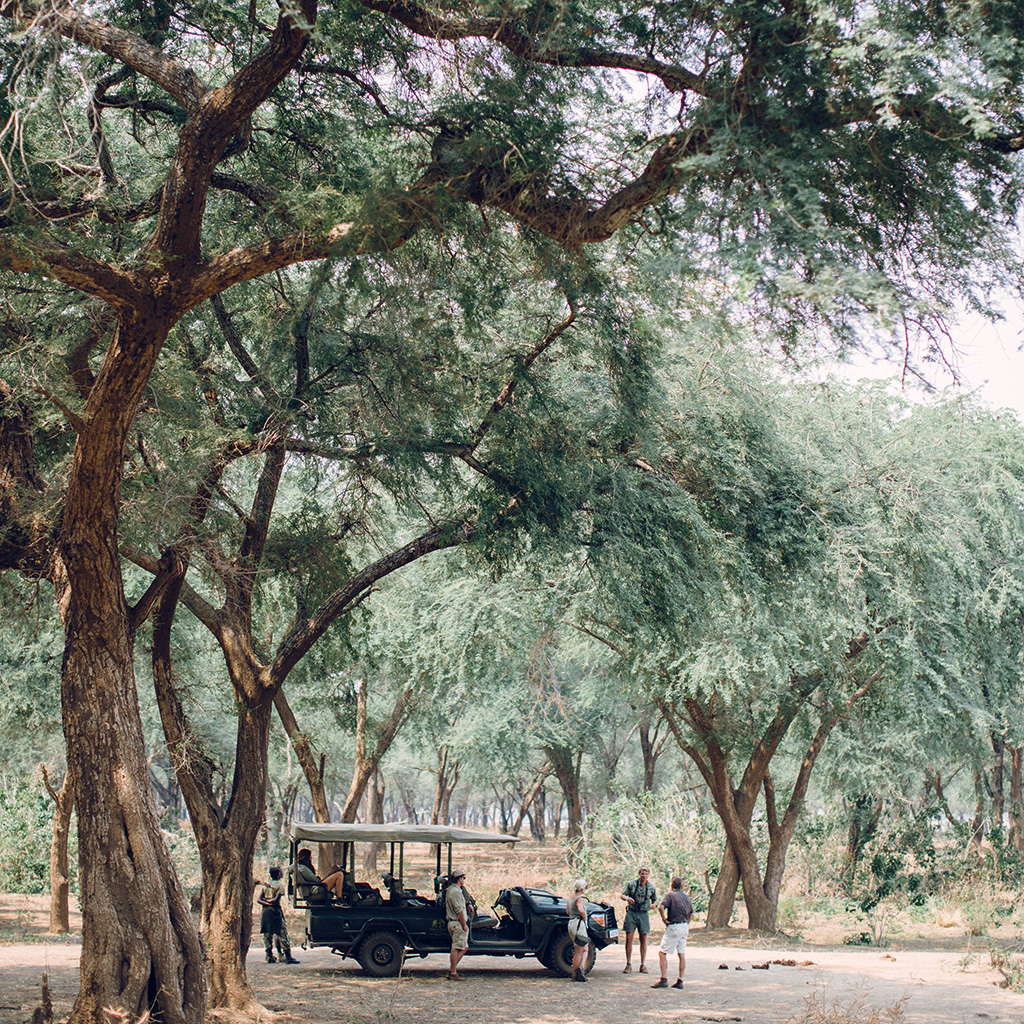
Ana trees form a dense canopy on either side of the river, giving welcome shade to wildlife and visitors. Image: Tusk & Mane.
STAY HERE
Kayila Camp is in the Chiawa GMA, a 3,400ha private game reserve skirting the national park. From R5 000 pp all inclusive except park fees. kayilacamp.com
Anabezi Camp in the eastern section of the park is built on raised timber decks with wooden walkways giving it an elevated view of the river and game from your private plunge pool. From R5,000 pp all inclusive except park fees. anabezi.com
Tusk & Mane, inside the park, offer luxury safaris and adventure between three fly camps. From R9,000 pp all inclusive. tuskandmane.com
Redcliff Zambezi Lodge is also in the east of the park. Here the river passes through the striking red cliffs of the Mupata Gorge.
It’s 13km by boat from the park, and the focus is on sport fishing, though boat trips, game viewing and bird-watching are also available. From R2,600 pp. redcliff-lodge.com
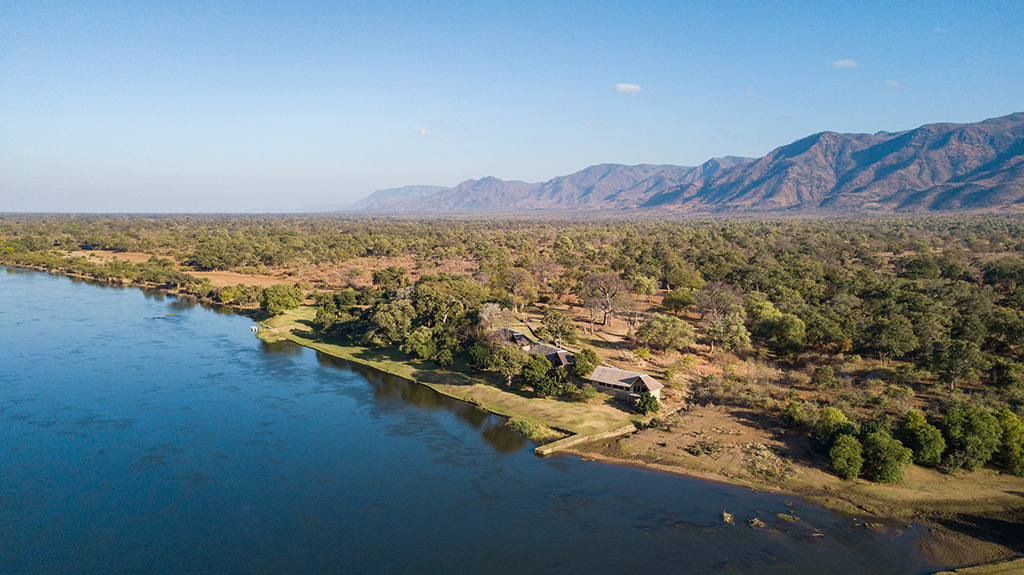
Kayila Camp, Zambia. Image: African Bush Camps.
Self-Catering & Camping
Gwabi River Lodge is 145km from Lusaka and easily accessible through-out the year. Chalets from R1,800 B&B (sleep two) and camping from R130 pp. gwabiriverlodge.com
Kaimbi Safaris is 65km upriver from the park. Air-conditioned chalets from R5 ,77 full board (sleep two), self-catering from R3 417 (sleep six) and camping from R220 pp. kaimbi.com
Mvuu Lodge hosts a tiger-fish catch-and-release competition from 22–24 October. Self-catering tents from R4 ,40 (sleep two) and camping from R420 pp. mvuulodge.com
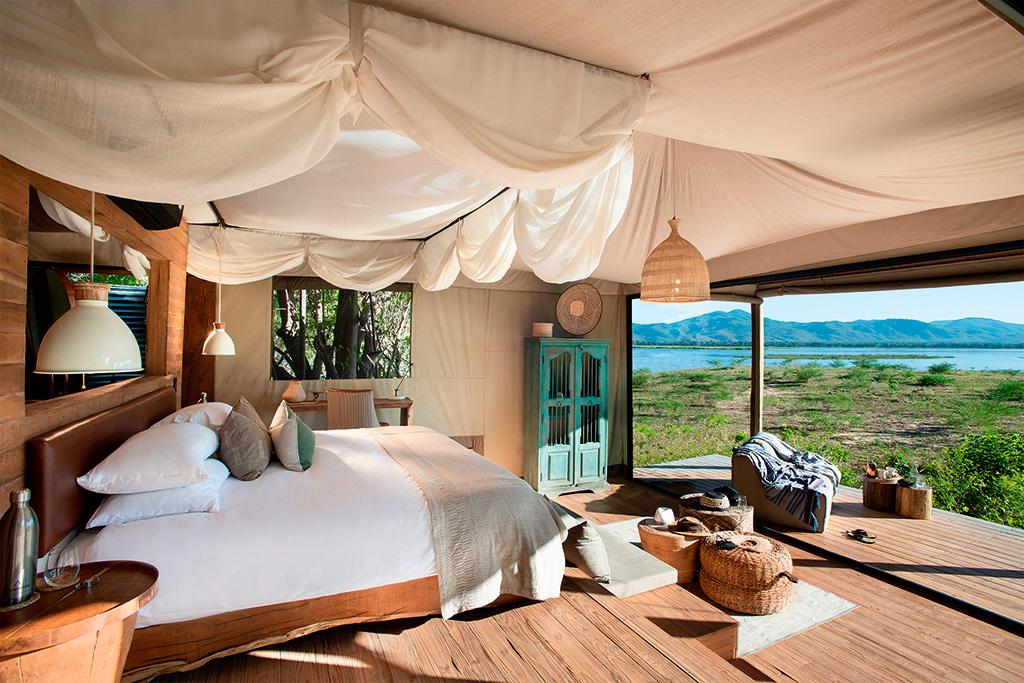
Nyamatusi Camp
Mana Pools National Park, Zimbabwe
Getting There
Access is either by air charter, road transfer or 4×4 self-drive. From Harare it’s a five-and-a-half-hour drive to Mana Pools. About 17km past Makuti is the Marongora office, where you get your entry permit to the park (be at the office by 3pm as the gate closes at 4pm). Continue on the main road through the Tsetse Fly Control Point, turn right onto a signposted dirt road to Mana Pools where you’ll present your permit at the first of two gates. If coming from Zambia, you’ll cross the Zambezi River at Chirundu where you’ll clear customs and immigration. About 46km from Chirundu you’ll reach the Marongora office. Then carry on as per previous directions.
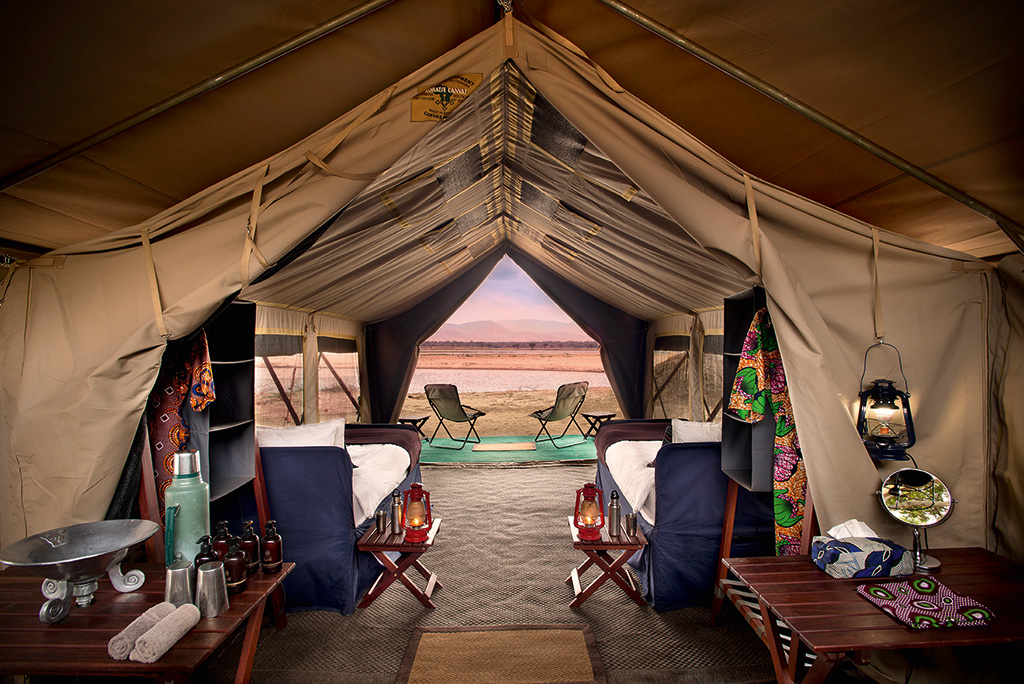
Zambezi Expeditions
Need to Know
Mana Pools is also a malaria area. The dry season from June to October is the best time to visit. The park is open all year round, but most private lodges are closed during the rainy season between December and March. Zimparks offers accommodation throughout the year, however self-drivers need to be extremely cautious in heavy rains and 4×4 is recommended. Self-drivers need to make sure they have plenty of fuel to cover the journey. The nearest fuel is at Karoi. Provided you get a licence and exercise common sense, self-drive visitors are allowed to get out of their vehicles and walk in the floodplain and woodlands without the need of a guide.
STAY HERE
Kanga Camp is an attractive, 12-bed tented camp built on decking around the edge of the Kanga Pan, perfect for an ‘armchair safari’. From R5,500 pp all inclusive. 021-201-6787, africanbushcamps.com
Zambezi Expeditions is a tented camp for private safaris, including guided walking and canoeing. From R5,500 pp all inclusive. 021-201-6787, africanbushcamps.com
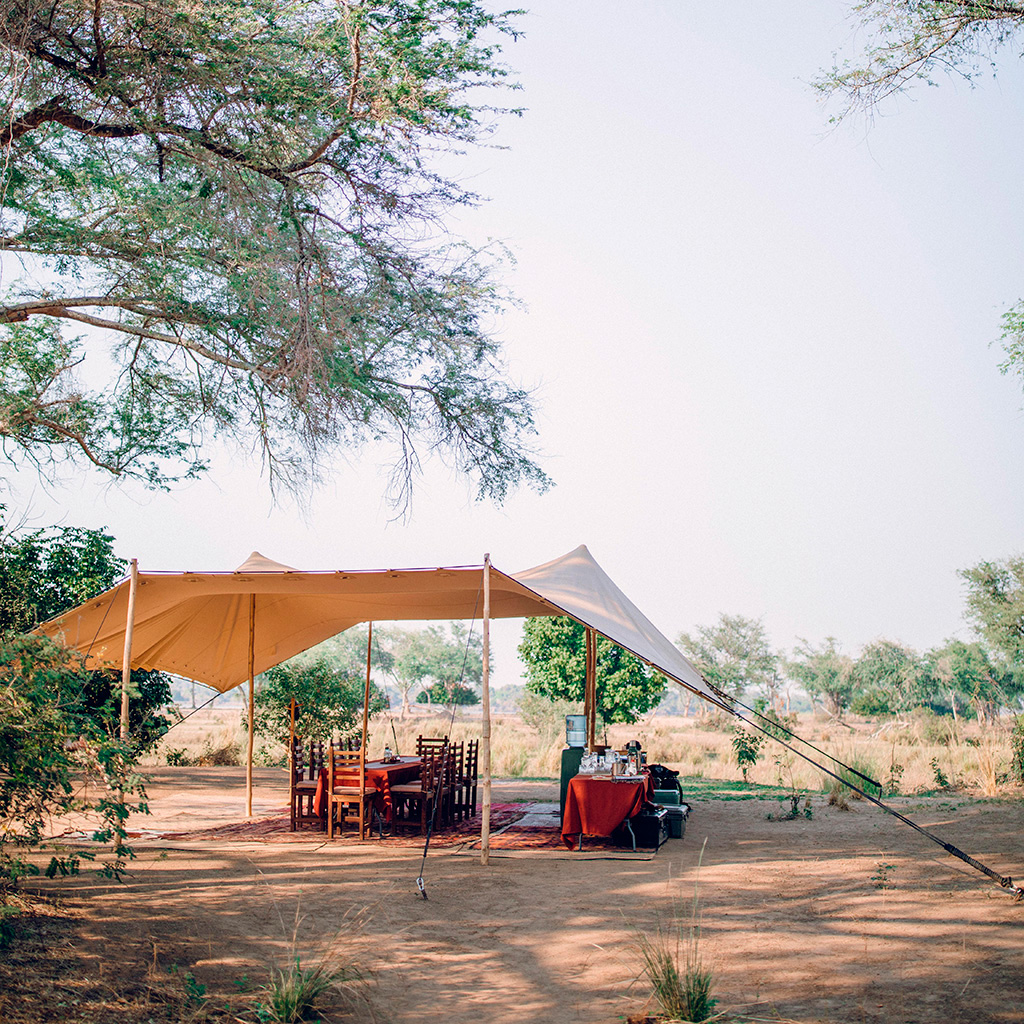
Tusk & Mane
Nyamatusi Camp consists of six luxury tented suites set in a remote part of Mana Pools, downstream from the main floodplain. The camp is spread out along the banks of the Zambezi, overlooking the river and the Zambian escarpment beyond. From R5,500 pp all inclusive. 021-201-6787, africanbushcamps.com
Zimparks Accommodation: The Zimbabwe National Parks Authority offers a variety of budget accommodation ranging from self-catering lodges to campsites (with basic ablution blocks) and remote campsites (no facilities at all except for long-drop toilets). Camp areas are not fenced so wild animals can wanderthrough. From R330 pp. bookings@zimparks.org.zw
This article was first published in the March 2020 issue of Getaway magazine.
Get this issue →
All prices correct at publication, but are subject to change at each establishment’s discretion. Please check with them before booking or buying.


